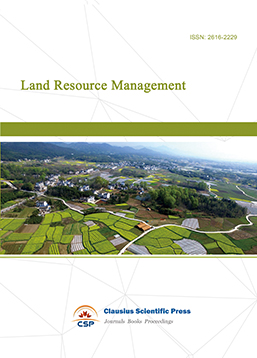Analysis of the Factors Influencing the Vulnerability of the GERT Network for the Quality Chain Based on Visual Boundary Positioning for Service-Oriented Manufacturing Systems
DOI: 10.23977/ieim.2023.060805 | Downloads: 10 | Views: 1198
Author(s)
Zhongyuan Zhang 1, Hui Sun 1, Yingli Zhang 1
Affiliation(s)
1 School of Economics and Management, Liaoning University of Technology, Jinzhou, Liaoning, 121001, China
Corresponding Author
Yingli ZhangABSTRACT
As the basic element of assembled buildings, the effective control and management of the quality of precast concrete components is the key to ensure the quality and safety of assembled buildings. To strengthen the quality chain control of prefabricated components in prefabricated building projects, the paper applies the quality chain theory and the graphical review technology to the quality management of precast components and comprehensively analyzes and summarizes the quality influencing factors in the entire process of forming prefabricated components from five aspects: personnel, equipment, systems, environment, and materials. The paper also analyzes the influencing factors of GERT network vulnerability of precast component quality chain from four aspects of design, production, transportation and assembly of precast components, so as to provide reference and reference for quality chain control of precast components of assembled buildings.
KEYWORDS
Prefabricated components, quality chain, GERT, influencing factorsCITE THIS PAPER
Zhongyuan Zhang, Hui Sun, Yingli Zhang, Analysis of the Factors Influencing the Vulnerability of the GERT Network for the Quality Chain Based on Visual Boundary Positioning for Service-Oriented Manufacturing Systems. Industrial Engineering and Innovation Management (2023) Vol. 6: 26-31. DOI: http://dx.doi.org/10.23977/ieim.2023.060805.
REFERENCES
[1] Costa G., & Madrazo L. (2015). Connecting building component catalogues with BIM models using semantic technologies: an application for precast concrete components. Automation in Construction, 57(SEP.) 239-248.
[2] Vel M. S., Varghese K., & Ramesh B. N. (2016). Building Information Modeling for Precast Construction: a Review of Research and Practice. Construction Research Congress.
[3] Philipp E., & Manfred G. (2017). Structural Implementation of Slender Concrete Shells with Prefabricated Elements. Journal of the International Association for Shell and Spatial Structures, 58(1):51-64.
[4] Li C. Z., Shen G. Q., Xu X., et al. (2017). Schedule risk modeling in prefabrication housing production. Journal of Cleaner Production, 153(1): 692-706.
[5] Gary S. (2011). Building Quality into Projects. Itnow, 53(1): 30-31.
[6] Zhou C., Zheng Y., Liu G., & Xue S. (2020). Application of information technology in the quality management of prefabricated components production process. Construction Technology, 49(05):76-79.
[7] Zhu X. (2020). Research on field connection technology and quality control of assembled concrete structure construction. Xi'an University of Architecture and Technology.
[8] Chen W., Sun X. J., Chen R. L., & Li H. (2020). Optimization of design control of prefabricated components for assembled buildings based on QFD-DSM. Journal of Civil Engineering and Management, 37(04):39-45.
[9] Guo Y. (2018). Research on quality evaluation of precast concrete component production process. Chongqing University.
[10] Gong G. S., Gao, Q., & Zhang, R. J. (2019). Real-time information-driven monitoring system for precast component production based on real-time information. Journal of Civil Engineering and Management, 36(06):171-177.
[11] He L., & Li X. W. (2020). Research on the types, causes and prevention of appearance defects of precast concrete members. Construction Economics, 41(S1):294-296.
| Downloads: | 27006 |
|---|---|
| Visits: | 812594 |
Sponsors, Associates, and Links
-
Information Systems and Economics

-
Accounting, Auditing and Finance

-
Tourism Management and Technology Economy

-
Journal of Computational and Financial Econometrics

-
Financial Engineering and Risk Management

-
Accounting and Corporate Management

-
Social Security and Administration Management

-
Population, Resources & Environmental Economics

-
Statistics & Quantitative Economics

-
Agricultural & Forestry Economics and Management

-
Social Medicine and Health Management

-
Land Resource Management

-
Information, Library and Archival Science

-
Journal of Human Resource Development

-
Manufacturing and Service Operations Management

-
Operational Research and Cybernetics


 Download as PDF
Download as PDF